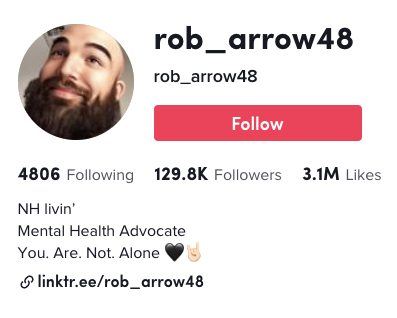March is Brain Injury Awareness month, and the Brain Injury Association of NH is focused on raising awareness about issues that affect brain injury survivors, including the link between brain injury and suicide.
Read MoreAccording to the Center for Disease Control and Prevention (CDC), adults with disabilities were three times more likely to report suicidal ideation in the past month compared to persons without disabilities.
Read MoreAccording to the Trevor Project, 45% of LGBTQ+ youth have seriously considered suicide in the past year -- and 1 in 5 trans youth attempted suicide in the past year (Trevor Project, 2022). Who are LGBTQ+ youth, why is their risk of suicide so high, and what can we do about it?
Read MoreThe pandemic impact is amplified and has created a Partnership for Public Health is using the “Together With Veterans” model to increase mental health support for Veterans during a challenging time.
Read MoreJohn Broderick missed the signs of mental illness in his son, with tragic consequences. Broderick is on a new speaking tour to raise awareness and combat the stigma associated with mental health issues. As he focuses on schools,
Read MoreWhile NH’s suicide mortality rate of 16.4/100k population is above the national average of 14 deaths/100,000 people, the Granite State has a special distinction in suicide prevention.
Read MoreIndividuals experiencing domestic violence and intimate partner violence (IPV) are at increased risk for death by suicide; their experience can result in disorders like post-traumatic stress disorder (PTSD), depression and schizophrenia.
Read MoreThe Department of Health and Human Services, National Institutes of Health, National Institute of Mental Health, Office of the Clinical Director, in Bethesda, MD, seeks a qualified individual to fill an Intramural Research Training Award position, with employment starting in June 2023.
Read MoreWhile the holiday season has many of us feeling stressed as we strive to “do it all”, it is important not to perpetuate the myth that there are more suicides during this time of year.
Read MoreA weightlifting TikTok influencer and a football team are on the list of those fighting to lift the stigma against seeking help for mental health – a stigma that impacts many men.
Read More13-year-old Reagan Bischoff, who has grown up with cerebral palsy and partial paralysis on her left side, started the YouTube channel “Throw Leftie” with tips for overcoming everyday challenges.
Read MorePaul Lore and three fellow Veterans are so motivated by the problem of Veteran suicide that they rowed thousands of miles across the Atlantic Ocean to raise money to support a therapy dog project.
Read MoreHow do we sort through it all and learn about issues important to us and our beliefs?
Read MoreThe Emergency Department (ED) Screening and Treatment Options for Pediatric (STOP) Suicide Collaborative is hosting an informational webinar on Tuesday, Oct. 25, at 12 pm CT.
Read MoreThis lecture will review the criteria for a TBI, the biggest risk factors for a TBI, the most common causes and symptoms of a TBI, the aging brain, and the impact a TBI may have on the aging brain.
Read MoreScreening all patients for anxiety and depression is being recommended by an influential national task force which stopped short of supporting universal screening for suicide risk.
Read MoreVA Secretary Denis McDonough established a nationwide goal to house 38,000 Veterans in 2022. According to Dave Tille, Director of Veterans Services, Harbor Homes has housed 121 homeless Veterans so far in 2022.
Read MoreThe creation of statewide Rapid Response Teams has improved access to mental health services and provides more individualized approaches that are more empowering for people in crisis.
Read MoreThe NH Lawyers Assistance Program collaborated with the NH Coalition for Suicide Prevention to develop a series of articles targeted to lawyers, a group at high risk for suicide and depression, using fictional scenarios of how colleagues could help a troubled small-town lawyer.
Read MoreIn New Hampshire, suicide is the second leading cause of death for children, adolescents, and young adults age 15-to-24-years-old. This age group is considered high risk because they are facing many uncertainties as they transition from high school to college to the “real world”.
Read More




















